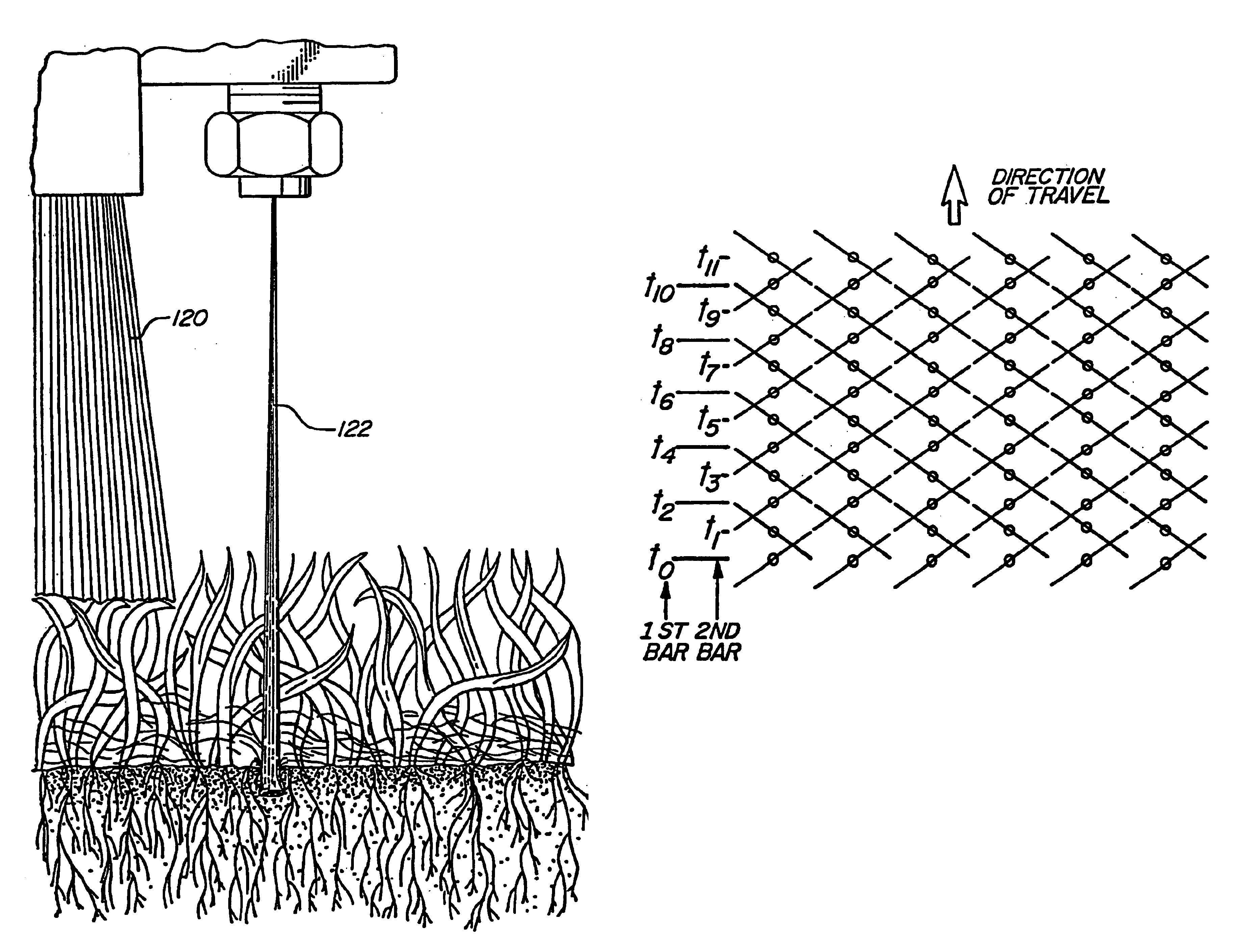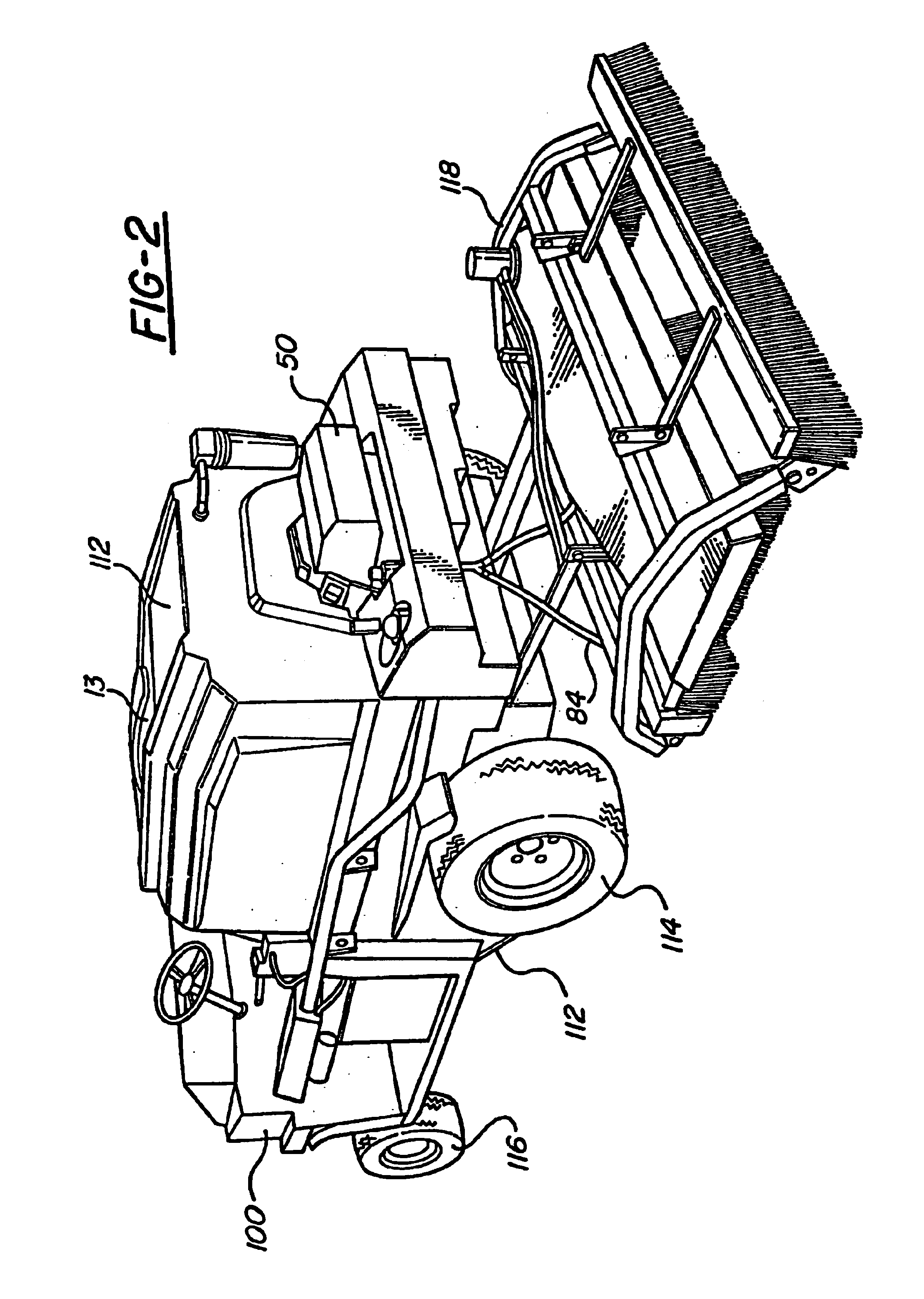Method and system for high pressure liquid injection of turf seed
a high-pressure liquid and seed technology, applied in the field of turf care methods and systems, can solve the problems of significant disruption or limitation of play, difficult competition of germinating seeds with existing grass population for light, water and nutrients, and significant loss of play and hence revenue, and achieves uniform distribution with the tank, stimulates rapid germination, and absorbs kinetic energy quickly.
- Summary
- Abstract
- Description
- Claims
- Application Information
AI Technical Summary
Benefits of technology
Problems solved by technology
Method used
Image
Examples
Embodiment Construction
[0063]The following detailed description of various embodiments of the seed-fluid injection system of the present invention are presented in a way of example only and are not intended to limit the invention to just those embodiments and methods shown and / or described. This turf seed injection system is intended primarily for use in the turf care industry, but may be used in other agricultural arts such as for the planting of cash crops. The seed-fluid injection device may be viewed as a larger version for injecting larger seeds such as corn or soybeans. These larger devices would of course be adapted by the use of larger accumulators and / or nozzle heads to accommodate the larger seeds and planting depths. Thus, the overall scope of my invention here should be understood to encompass the adaptations, variations, alternatives and different uses of the device that are described herein or are logically derived from the teachings herein. The fluid-seed injecting device disclosed herein h...
PUM
 Login to View More
Login to View More Abstract
Description
Claims
Application Information
 Login to View More
Login to View More - R&D
- Intellectual Property
- Life Sciences
- Materials
- Tech Scout
- Unparalleled Data Quality
- Higher Quality Content
- 60% Fewer Hallucinations
Browse by: Latest US Patents, China's latest patents, Technical Efficacy Thesaurus, Application Domain, Technology Topic, Popular Technical Reports.
© 2025 PatSnap. All rights reserved.Legal|Privacy policy|Modern Slavery Act Transparency Statement|Sitemap|About US| Contact US: help@patsnap.com



